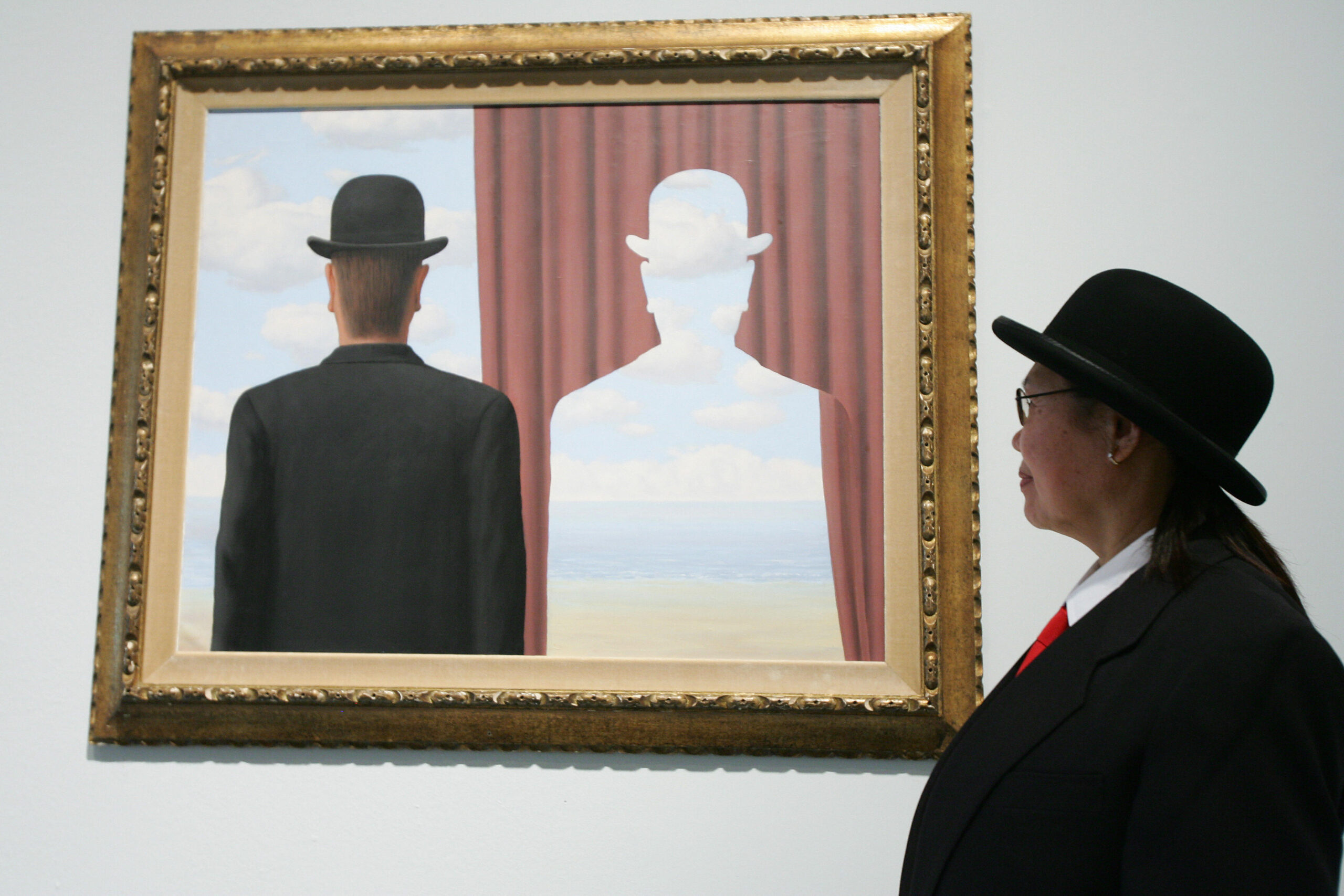Alcune delle opere del pittore belga René François Ghislain Magritte (1898-1967), considerato il maggiore esponente del surrealismo in Belgio, sono diventate delle vere e proprie icone.
In La Trahison des images (Ceci n’est pas une pipe) (1928) ad esempio, realizzata quando l’artista aveva trent’anni, Magritte rappresenta una pipa dipinta su uno sfondo giallo, con sotto la scritta “Ceci n’est pas une pipe/Questa non è una pipa”, che può confondere lo spettatore. Ma in realtà l’artista ha ragione: quella non è una pipa, ma la rappresentazione di una pipa, rinnegando così la pittura classica, secondo cui non c’era differenza tra l’oggetto reale e la sua rappresentazione.
Invece in Les Amants (1928), di cui ne esistono due versioni, il pittore raffigura un bacio, inquietante, tra persone con il volto coperto da un lenzuolo. Ma tra le opere più famose c’è anche Golconda (1953), in cui Magritte raffigura una serie di uomini in bombetta – un tema ricorrente (vedi anche L’homme au chapeau melon e Il figlio dell’uomo, quello con la mela verde in primo piano) – che cadono dal cielo come fossero pioggia.

 Los Angeles, UNITED STATES: Gallery security guard J. Dulay poses beside "Decalcomania" ("La Decalcomanie") by Belgian surrealist artist Rene Magritte (1898-1967) at the preview of "Magritte and Contemporary Art: The Treachery of Images" at the Los Angeles County Museum of Art (LACMA), 15 November 2006 in California. The show is the first major exhibition to explore Magritte's impact on contemporary artists, and features 68 pieces by Magritte with another 68 works by contemporary artists. The exhbition installation is specially designed to feature an inventive presentation which includes clouds on the floor, freeways on the ceiling, with all gallery guards dressed in bowler hats and black suits. AFP PHOTO / Robyn BECK (Photo credit should read ROBYN BECK/AFP/Getty Images)
Los Angeles, UNITED STATES: Gallery security guard J. Dulay poses beside "Decalcomania" ("La Decalcomanie") by Belgian surrealist artist Rene Magritte (1898-1967) at the preview of "Magritte and Contemporary Art: The Treachery of Images" at the Los Angeles County Museum of Art (LACMA), 15 November 2006 in California. The show is the first major exhibition to explore Magritte's impact on contemporary artists, and features 68 pieces by Magritte with another 68 works by contemporary artists. The exhbition installation is specially designed to feature an inventive presentation which includes clouds on the floor, freeways on the ceiling, with all gallery guards dressed in bowler hats and black suits. AFP PHOTO / Robyn BECK (Photo credit should read ROBYN BECK/AFP/Getty Images)












